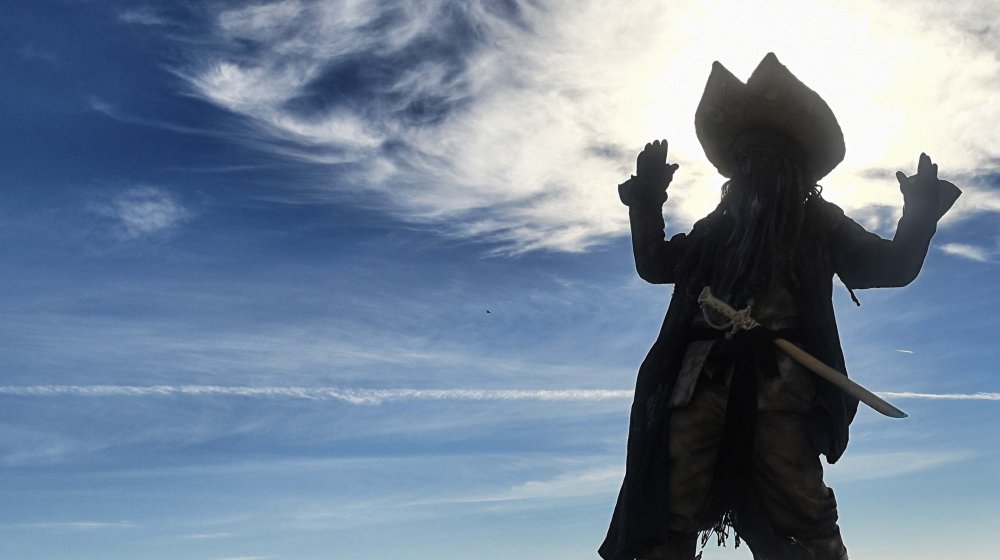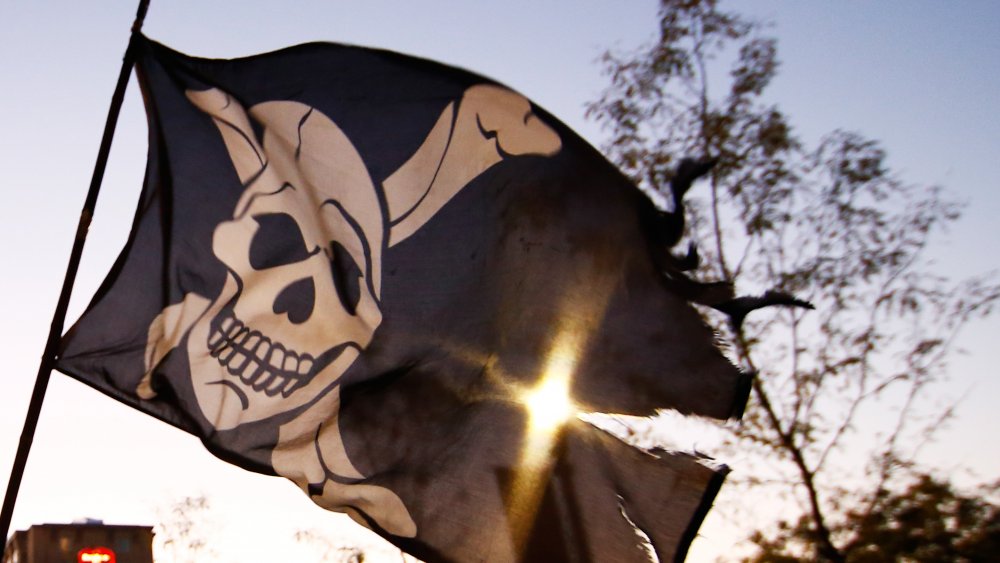Where Is Calico Jack Buried?
"Calico" Jack Rackham remains one of the best remembered pirates from the golden age of sail, trailing only behind fictional buccaneers and people who named themselves after the color of their beards in terms of sheer historical market penetration. In his short but ambitious career, he terrorized the Bahamas, which, as places to terrorize go, isn't a bad gig. He and his crew stole multiple ships, commandeered government vessels, received amnesty from the British for their crimes, changed their minds, and went back to looting and plundering — all between 1718 and 1720. In less than two years, he planted himself in the public consciousness and has stayed there ever since.
With that much clout and swagger, it would make sense if Jack's modern-day admirers turned his gravesite into a sacred place of skullduggerous pilgrimage. There's only one problem: they'd have to find it first.
Down to Davey Jones with Calico Jack
Like so many who embraced the pirate's lifestyle, Jack Rackham met his fate at the business end of a gallows. In 1720, he and his crew were celebrating the capture of a Spanish treasure galleon with the traditional post-capture-of-a-Spanish-treasure-galleon boozefest when, wouldn't you know it, the British Navy showed up out of the blue. Rackham and his crew were taken into custody without much swordsmanship or to-do, on account of how most of them were too hammered to do anything about it. Rackham wound up hanged in Port Royal on November 18th, 1720, before having his body gibbeted, which is a fancy word for "hung up like old laundry as a warning to other pirates."
After that, accounts vary, but odds are that Jack wound up back at sea. His body was either dropped in the ocean or, possibly, buried in the section of Port Royal that was washed away during an earthquake in 1907. Whatever the case, fans of Calico Jack can take comfort in knowing that any time they take a dip in the sea, they are, if only a little bit, swimming in him.

